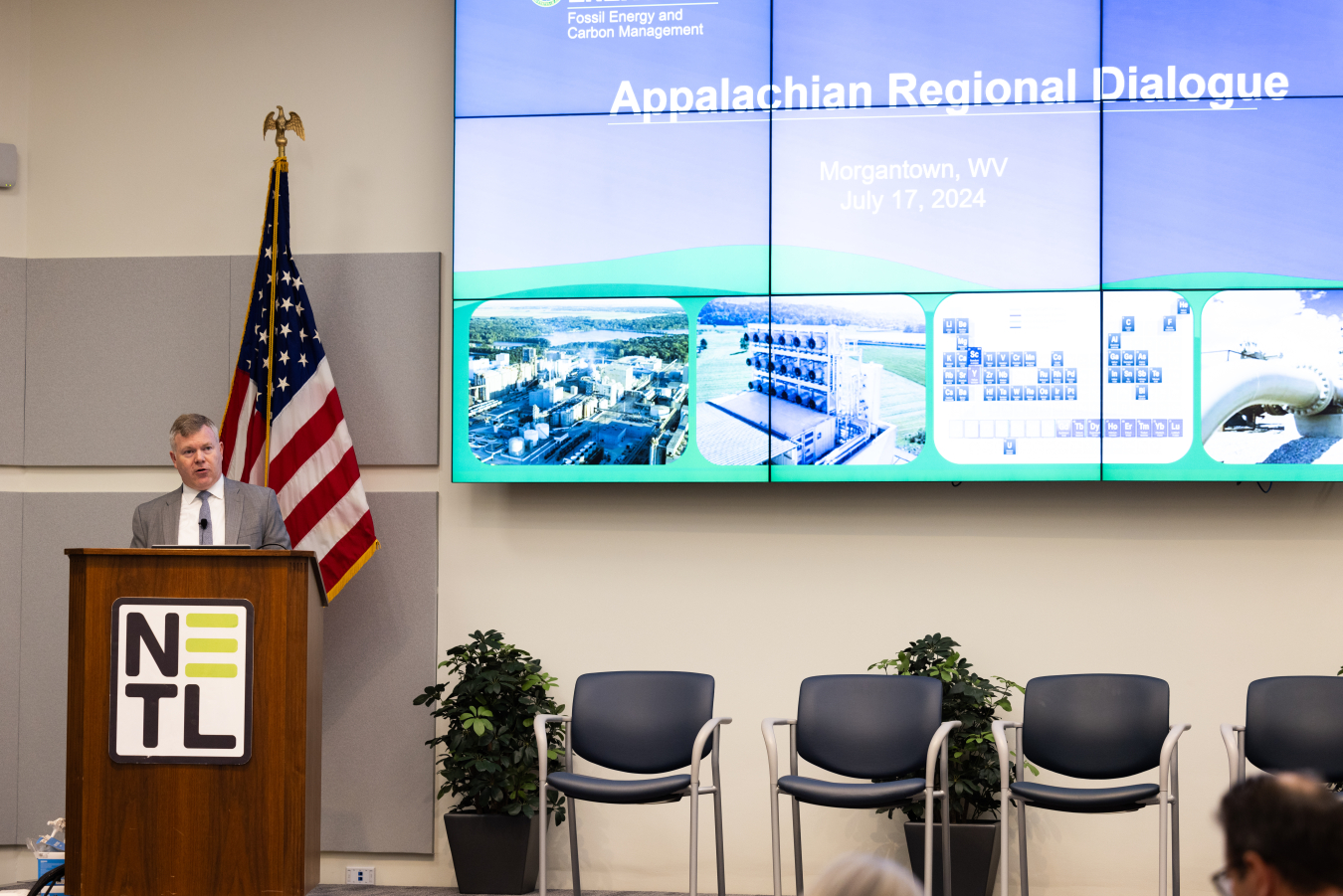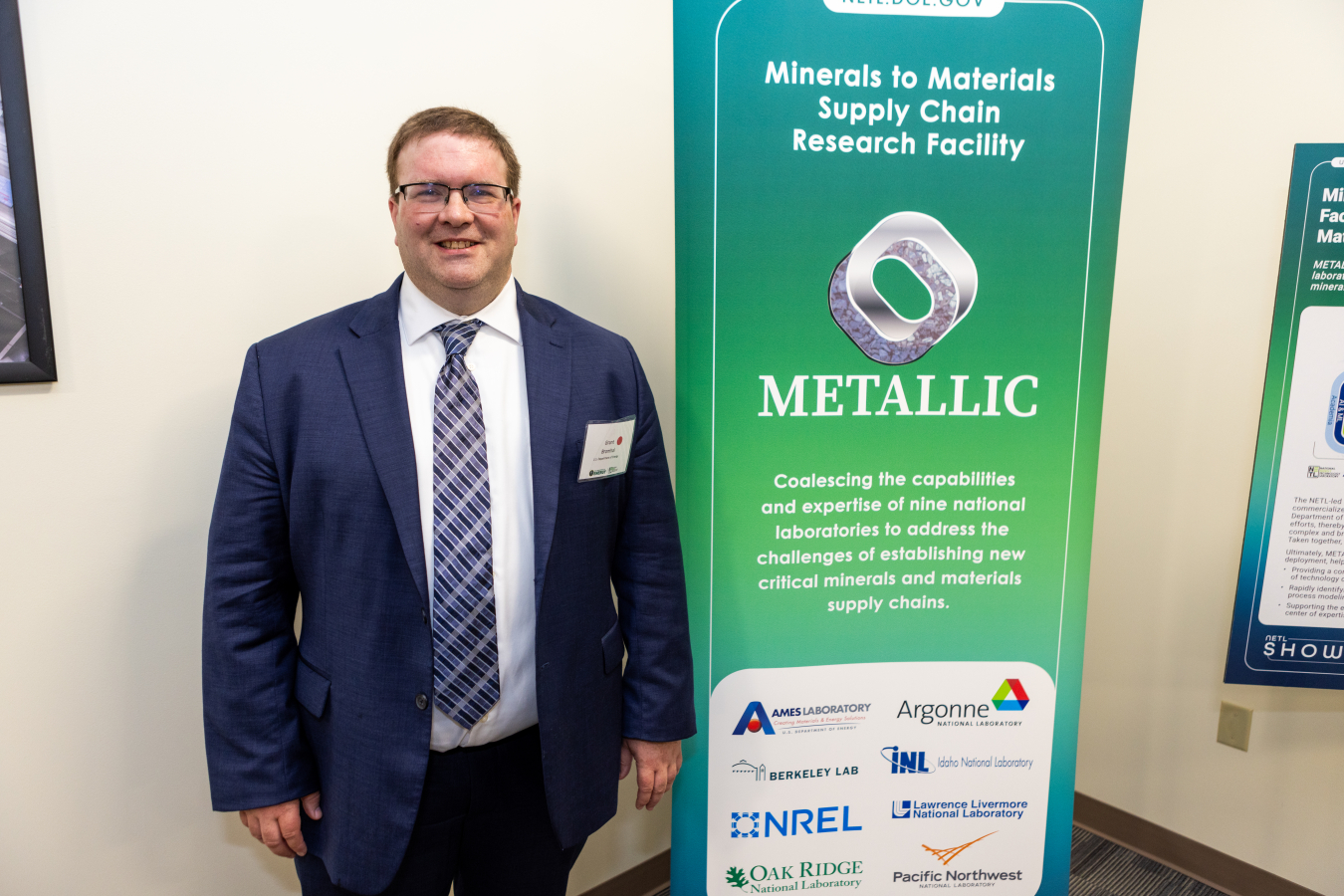On July 17, 2024, FECM hosted an Appalachia Regional Deploy Dialogue focused on critical minerals at the National Energy Technology Laboratory in Morgantown, West Virginia
Office of Fossil Energy and Carbon Management
July 29, 2024On July 17, 2024, the U.S. Department of Energy's (DOE’s) Office of Fossil Energy and Carbon Management (FECM) hosted an Appalachia Regional Deploy Dialogue focused on critical minerals at the National Energy Technology Laboratory in Morgantown, West Virginia. This event, which was a part of the ‘Deploy Dialogue’ series launched by DOE’s Loan Programs Office last year at Deploy23, was the first regional dialogue of its kind. It brought together public and private sector stakeholders, including representatives from industry, investors, advisors, and the government, to discuss how the Appalachian region can support the expansion and development of a domestic critical minerals supply chain.
The regional dialogue aimed to identify actions to accelerate deployment in Appalachia, drawing on insights from DOE national laboratory, university, and industry experts that have worked with FECM over the past decade. Additionally, it incorporated material from FECM’s new “Appalachia Regional Report: Building a Clean Energy Economy and the Supporting Role of the U.S. Department of Energy’s Office of Fossil Energy and Carbon Management.”
Critical Minerals—the Building Blocks for Clean Energy Technologies

Dr. Marianne Walck, Director of DOE’s National Energy Technology Laboratory kicked off the regional dialogue by outlining the bigger picture—critical minerals are the building blocks for many modern technologies and are essential for national security and economic prosperity. These minerals, such as rare earth elements, lithium, and cobalt, are found in products ranging from smartphones to solar panels, wind turbines, and batteries for electric vehicles.
Global demand for these critical minerals is expected to skyrocket by 400-600 percent over the next several decades as the world moves toward achieving a clean energy and industrial economy. This means that we must work to rapidly invest in the development of a domestic supply chain in the United States, including Appalachia, to meet this demand.
“By working together to redevelop Appalachia, a region that is well positioned to produce critical minerals and materials from coal and energy and mining waste streams, we can meet substantial demand—perhaps as much as 50 percent of rare earth element demand, for example—and produce critical materials much faster than the time it takes to begin production from a new mine, which is often more than a decade,” said Dr. Walck.
Investments in Appalachia

Ryan Peay, Deputy Assistant Secretary for the Office of Resource Sustainability took a deeper dive into explaining FECM’s research, development, and demonstration portfolio geared toward increasing the domestic production and processing of critical minerals in Appalachia under its Division of Minerals Sustainability.
Since Appalachia has 70% of U.S. coal mines, produces 26% of U.S. coal, and produces 34% of U.S. natural gas from its onshore fields, the region is well positioned to produce rare earth elements and critical minerals from energy and mining waste streams while remediating land and water.
Additionally, within Appalachia, three first-of-a-kind pilot facilities have been built with DOE support to test technologies for upgrading rare earth element concentrations from acid mine drainage, coal ash, coal, and coal wastes to individually separated, high-purity rare earth oxides and salts. One of those pilots is in West Virginia, where DOE provided support for West Virginia University to build a pilot facility that uses material from an acid mine drainage treatment plant to produce individually separated high purity rare earth element and critical mineral oxides.
“We will not be able to see these technologies move from research and development to commercialization without the active involvement of the private sector, academia, local governments, foundations, and many other stakeholders in the critical minerals and mining space,” said Mr. Peay.
These pilot facilities, together with recently announced Minerals to Materials Supply Chain Facility (METALLIC), Critical Materials Collaborative, Critical Materials Innovation Hub, and ongoing industry collaboration and investment, will support the Appalachian region as it accelerates the domestic production of these critical minerals.
Regional Deploy Dialogue

In the afternoon, a smaller group of attendees took part in the ‘Deploy Dialogue,’ a 2.5-hour event aimed to facilitate discussion among stakeholders in the Appalachian region to better understand the challenges and opportunities in critical minerals. Some of the questions framed as a part of the dialogue included:
- What is hindering the development of critical minerals from secondary and unconventional resources in Appalachia?
- What solutions and approaches could be employed to unlock the potential of critical minerals resources in Appalachia?
- How will the development of this industry impact the workforce in Appalachia?
The discussions included the need to reduce the demand and market risks, further characterize the resource, take a multi-product approach, and streamline regulation and permitting. Different development approaches were discussed, including developing a hub-and-spoke model that moves various volumes of material to a central processing site, creating portable processing technology that can be relocated as needed, or establishing point-source processing where there is a sufficient concentration of material at a single site.
Additionally, the workforce presents significant challenges, notably in terms of availability and skill level. There is a growing need for training programs to equip workers with the specialized skills required for the critical minerals industry. This is compounded by the safety aspect associated with mining and incentivizing labor to join the industry. Attendees discussed potential solutions such as marketing campaigns to attract workers, increasing industry participation through apprenticeships, and more.
DOE’s Loan Programs Office released a meeting summary, offering a more detailed overview of the themes addressed throughout the dialogue.
To learn more about how FECM is supporting the development of a critical minerals industry, sign up to receive email updates and follow us on X, Facebook, and LinkedIn.

